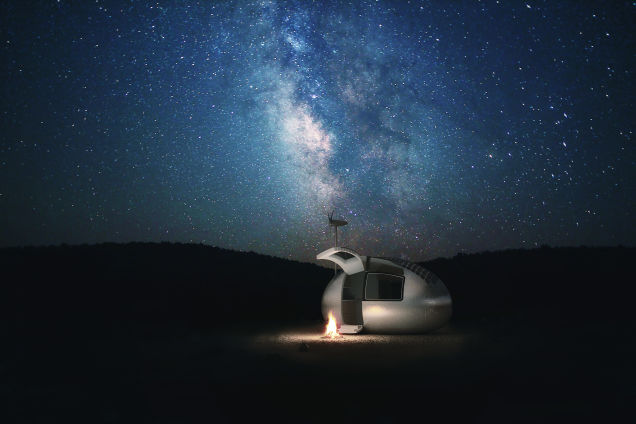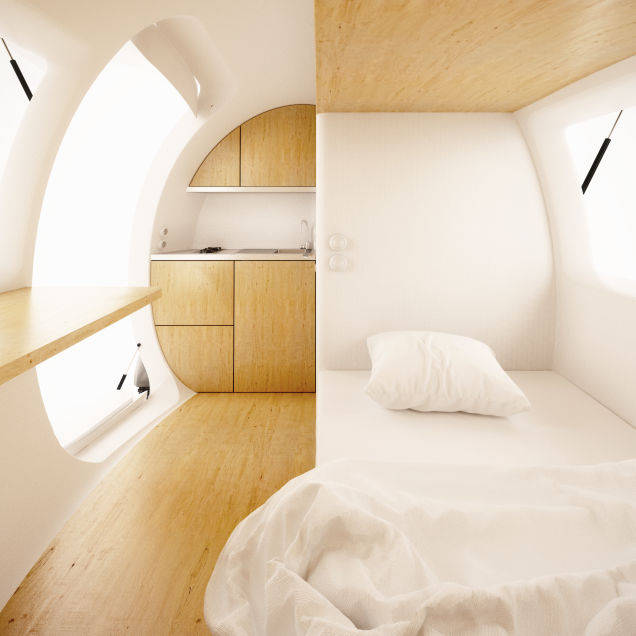Everyone is sharing this new hi-tech craze about the eco-capsule, developed by a group of engineers and designers from Slovakia. Fair enough, this thing looks pretty neat and cosy, I imagine one would feel like a chicken in the egg inside one of those. The eco capsule is a wet dream of any modern solar-and-wind-powered digital nomad. Add to this an electric car and wi-fi – and I am pretty much ready to move in right now. The eco capsule’s battery can also be used to charge electric cars – in addition to other electronic devices that you might want to take with you when you go off the grid.
The eco capsule weighs 1500 kg, has a battery capacity of 9744 Wh, and measures 2,5 x 4,5 x 2,5 m. The shipping cost overseas, from Slovakia where the production is set, starts at 2,000 euro, so I doubt that anytime soon these futuristic pods will be available to broke eco-conscious backpackers or UNHCR refugee camps (but IKEA is taking care of that). It is also designed for more or less solitary life, and I imagine would be popular with well-off writers and musicians. If I have to go through writer’s block at least I will do it with style and in some place with a great view!
—
Funny thing is, a few months ago I was reading about a construction invented in the 70s by a Finnish architect Matti Suuronen, the Futuro house. I got lucky enough to find one of them in Denmark, about half an hour north of Copenhagen. Futuro houses are about 4 meters tall and 8 meters in diameter round constructions that look like a flying saucer. Made of fiberglass and intended as a ski chalets, Futuro house’s first purpose was to be well insulated to keep the heat produced by the electric radiator. For some reason, despite initial enthusiasm and massive investments, Futuro houses only stuck around for about a decade, spreading across Scandinavia, Europe, the US, New Zealand, Australia, and even South Africa. The Futuros definitely provided more space and less existential loneliness than the eco capsule, but again, the idea was that the owner who wanted to use it as a shelter on a skiing trip would airlift it to a chosen spot by helicopter… Who knows why, but eventually most of Futuro houses were destroyed and the production was scrapped for good.

That is to say that eco capsule people are not inventing the wheel all over again, but obviously, with 40 years of technological development, we may hope that this new design will be more savvy and accessible to general public. The photos look fabulous.
—
This website has a lot of good FYI on Futuro house, all known locations where you can find them, and even classifieds if you feel like purchasing a flying saucer. The cheapest I saw was sold at $26,000, and I assume the infinite improbability drive is not included in the price.
Photos of eco capsules are borrowed from the official website.









Put on wheels for trailer. Maybe that could hide and come down to move….. To be pulled by a car than more people could use it. And could take all over.. Small for over night stay or longer… Change scenery